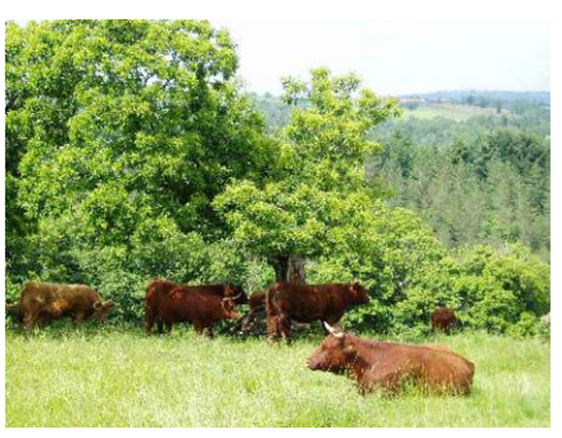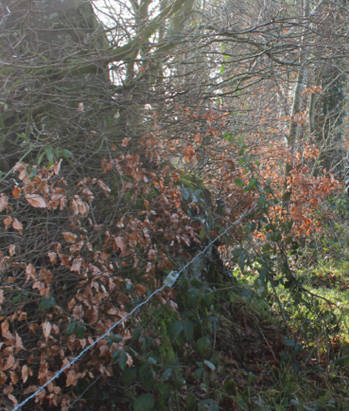Introduction to the challenge addressed
Farmers' hedgerows and land holdings offer many refuges for bees, including swarming periods.
Description of Good Practice
Astrid and her brother Arnaud are breeders in Calvados. In 2021, they planted 550m of hedge with pollinating and honey trees on their farm to promote honey production from the bees of a nearby beekeeper.
Two years earlier, the beekeeper went to meet Astrid and explained that he needed lime trees, present on Astrid's farm to have honey. Astrid, who aspired to receive hives on her farm, seized this opportunity. So they installed 18 hives on the farm. Talking to the beekeeper, Astrid learns that he has honey holes, that is, he has periods in the year when his bees do not have enough food and he must bring them some. To remedy this problem, Astrid again planted 500m of hedge 500m from the hives in early 2021 with pollinating and honey trees. To get a subsidy from the General Council, the species had to be local. The beekeeper therefore made his choice among the species he could plant, while having a hedge that is flowered all year round to feed his foragers. Thus Acacias, Hazelnuts, Chestnut trees, or lime trees are set up.
The trees cost 3000 €, subsidized at 40% by the General Council.
In addition, even if the hedge stores carbon in the roots and leaves that are returned to the ground, some of the pruning residues can be exported. Thus, for a breeding of 300 fattening places in young cattle, 12 km of hedges would make it possible to set up a use of platelets on the ground, especially for young heavy cattle of more than 550 kg (1 km of hedges correspond to 90 to 300 sqm of wood platelets.
Impact on farm performance
For the beekeeper, it allowed a maintenance and well-being of bees, while helping in the production of honey.
For the breeder, it is a carbon trap, a refuge for wildlife, and hedges help promote biodiversity
Audio-visual material


Farmer comment
Our breeding is strongly linked to the bocage, our animals are 8 months outside. As we already were aware of the importance of hedges for bees, it was obvious for us that planting 500m of hedge was the right solution to help our neighbor and the environment